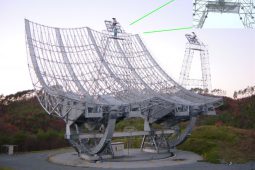PPARC セミナー(2024/04/15)

PPARCセミナー(2024/04/15)
(1)
[Name]
Yasumsa Kasaba
[Title]
Plasma and radio waves missions in Japan: Arase, BepiColombo, and JUICE ~ from Earth, via Mercury, to Jupiter ~
[Abstract]
In plasma and radio waves sensing, we are now running Plasma Wave Experiment (PWE) aboard Arase spacecraft which are investigating Geospace. This spacecraft have provided continuous observations of the inner magnetosphere, which extension until FY2032 has been approved. With good particle measurements, we are revealing electron and ion waves which can contribute to the acceleration and loss of energetic particles in Geospace.
Associated with this mission, we are also running two major collaborations with Europe including LESIA colleagues. The first is Plasma Wave Investigation (PWI) aboard the Mio spacecraft of BepiColombo, ESA-JAXA joint mission to Mercury, which will observe Mercury on the orbit from the end of 2025. The second is Radio and Plasma Wave Investigations (RPWI) aboard ESA JUpiter ICy moons Explorer (JUICE) mission to Jupiter, which will observe Jovian system on the orbit from 2031. In both Japan and Europe, main players are overlapped and collaborating strongly in both missions and beyond.
In this presentation, we show (1) Recent progress by Arase, (2) recent Mercury flyby studies of BepiColombo/Mio PWI, and (3) recent status of JUICE RPWI, focusing to Lunar-Earth flyby plans in this Aug which is linked to the feasibility studies on Jovian orbit.
(2)
[Name]
Akira Kazama
[Title]
Understanding of Martian meteorological phenomena mechanism
[Abstract]
The Martian atmosphere is very thin and dry. And main components is about 95% or more CO2. The CO2 atmosphere contains a lot of dust. Dust constantly suspended in the Martian atmosphere heats the atmosphere through direct absorption of solar radiation. It causes Martian atmospheric phenomena. Dust storms of various scales from local to global are occurring on Mars. Global and regional dust storms have been investigated by visible observations from orbiters (Cantor et al., 2001; Wang and Richardson, 2015; Battalio and Wang, 2020). However, local dust storms (LDS) are limited, and no statistical studies have been conducted. LDS occurring at scales below 1.6 x 106 km2 have been suggested to develop into vertical dust transport movements that reach high altitudes, such as rocket dust storms (Spiga et al.,2013; Wang et al., 2017). LDSs can also coalesce and develop into regional dust storms (Martin and Zurek, 1993, Cantor et al., 2001; Hinson and Wang, 2010; Wang and Richardson, 2015). Thus, various roles for LDSs have been suggested, and it is crucial in understanding the movement of dust in vertical and horizontal directions. We successfully retrieved dust optical depth and statistically detected LDSs using observation data from the Mars Express during Martian years (MY) 27-29, which was equipped with the high resolution Near-Infrared Spectrometer OMEGA. Utilizing these results, we conducted a statistical analysis of LDSs over three Martian years, including MY28 when global dust storms occurred, investigating their occurrence locations and frequencies.
We also try to detect thermal tides on Mars using surface pressure fluctuation. On Mars, there is seasonal variation in surface pressure of about 25% due to seasonal condensation and sublimation of CO2 to the polar caps.The factor that causes the daily variation is the thermal tide. Thermal tidal produce pressure fluctuations of 5% in a day. It may affect other meteorological phenomena due to it can make significant changes in a day. If a retrieval accuracy of less than 5% can be achieved, we may can detect thermal tides focusing on the equatorial region.
Our work have two topics: first one is Development of a tool for surface pressure fast retrievals. And another one is Development of a tool for dust optical depth retrievals at 2.77 μm. I will talk about our work progress in this seminar.




